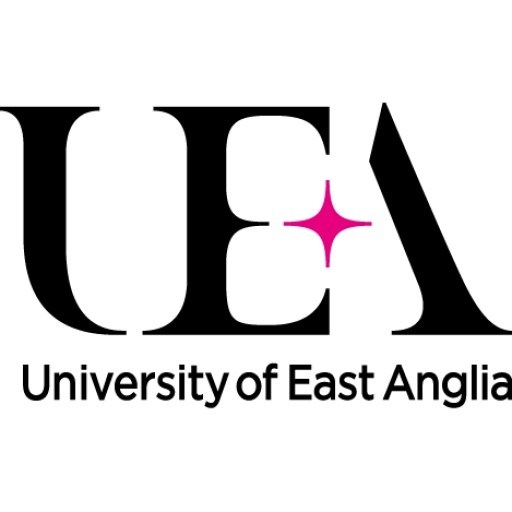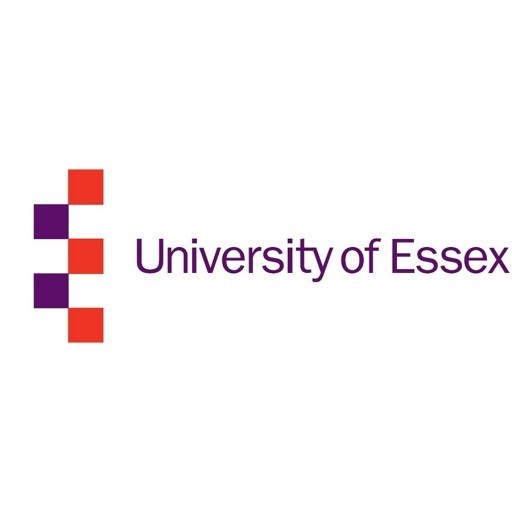Photos of university / #uniofeastanglia
The undergraduate degree in Computer Graphics at the University of East Anglia offers students a comprehensive foundation in the key principles and practices of digital imagery, visual effects, and interactive media. This programme is designed to equip students with a blend of artistic creativity and technical skills necessary to excel in the dynamic field of computer graphics, animation, and multimedia production. Throughout the course, students will engage with a diverse range of topics including 3D modelling, rendering techniques, digital animation, visual effects (VFX), virtual reality, and user interface design. The curriculum emphasizes hands-on learning through practical projects and industry-standard software, allowing students to develop a robust portfolio that showcases their talents and technical expertise.
In addition to technical skills, the programme fosters critical thinking, problem-solving, and innovative design approaches, preparing graduates for successful careers in animation studios, game development companies, advertising agencies, and multimedia production firms. Students will also benefit from the university’s strong links with industry partners, offering opportunities for internships, collaborative projects, and networking events with professionals in the field. The programme is delivered by experienced academics and industry practitioners who bring current industry trends and technological advances into their teaching.
Facilities include state-of-the-art computer labs and digital studios equipped with the latest hardware and software, enabling students to explore a wide range of techniques and creative possibilities. The course is designed to be flexible, catering to students interested in pursuing careers in digital arts, entertainment, simulation, and interactive media. Graduates of this programme will be well-prepared to enter a competitive job market or undertake further studies in related postgraduate programmes. With a balanced emphasis on technical proficiency and artistic expression, the Computer Graphics degree at UEA aims to nurture innovative creatives capable of shaping the future of digital visual communication.
The BSc in Computer Graphics at the University of East Anglia offers a comprehensive exploration of the fundamental and advanced concepts underlying modern computer-generated imagery and visual effects. This program is designed to equip students with the essential technical skills, creative insights, and theoretical understanding necessary to excel in fields such as digital media, animation, video game design, visual effects, and interactive media. Throughout the course, students engage with a rich curriculum that covers areas including 3D modeling, animation, rendering techniques, computer vision, human-computer interaction, and graphics programming. The program combines rigorous academic teaching with hands-on practical experience, giving students opportunities to develop their portfolio of work through projects and collaborations with industry partners.
Students will learn to utilize leading software tools such as Autodesk Maya, Adobe Creative Suite, and open-source options to produce high-quality visual content. The course emphasizes the importance of artistic creativity alongside technical expertise, encouraging students to develop their own styles and innovative approaches to problem-solving. The program also delves into fundamental computer science concepts relevant to graphics, such as algorithms, data structures, and programming languages like C++ and Python, enabling students to create customized graphics solutions. Critical thinking and problem-solving are fostered through projects that simulate real-world industry scenarios, preparing graduates for careers as graphics programmers, digital artists, visual effects specialists, or game developers.
Moreover, the program includes modules on emerging trends and cutting-edge research in computer graphics, such as virtual reality, augmented reality, and real-time rendering. Students are supported by dedicated faculty with expertise in both academic research and industry practices, ensuring that they stay at the forefront of technological advancements. The university's modern facilities and state-of-the-art laboratories provide an inspiring environment for creativity and experimentation. Graduates of this program will be well-equipped to contribute to the digital media industry creatively and technically, addressing complex visual challenges and driving innovation in computer graphics and visual communication.
The Computer Graphics undergraduate program at the University of East Anglia is designed to provide students with a comprehensive understanding of both the theoretical and practical aspects of computer graphics, visual computing, and interactive media. The program aims to develop skills in programming, algorithm development, and the application of computer graphics techniques in various domains including entertainment, simulation, and visualization. Students will explore core topics such as computer graphics principles, 3D modeling, rendering, animation, and human-computer interaction. The curriculum emphasizes the importance of computer programming skills, including proficiency in relevant languages such as C++, Python, and Java, to create and manipulate digital graphics effectively. Critical coursework includes modules on 3D modelling, shading and rendering, digital image processing, visualization techniques, and virtual reality. Additionally, students are encouraged to develop their knowledge of mathematics, particularly linear algebra, geometry, and calculus, which underpin much of the computational graphics work. Practical experience is gained through project work, laboratory sessions, and a final year dissertation that allows students to focus on a specific area of interest, applying their technical skills to real-world problems. The program also fosters teamwork and communication skills, preparing graduates for careers in industries such as gaming, film, advertising, and software development. To facilitate this, students have access to state-of-the-art facilities, including computer labs equipped with industry-standard hardware and software. The program is designed to meet current industry requirements and to prepare students for further research or professional roles. Entry requirements typically include strong GCSEs in English, mathematics, and science, and A-levels or equivalent qualifications in relevant subjects such as mathematics, computing, or design technology. Overall, the program aims to produce graduates who are creative, analytical, and technically proficient, capable of contributing to the advancement of computer graphics and digital media technologies.
The University of East Anglia offers a range of financing options for students enrolled in its Computer Graphics degree programmes. Prospective students are encouraged to explore various sources of financial support to help fund their studies. The university provides detailed guidance on scholarships, bursaries, and grants available specifically for students pursuing degrees in digital media and computer sciences. Scholarships are often awarded based on academic achievement, potential, or financial need, with some programs offering merit-based awards that recognize excellence in relevant fields.
Additionally, the university participates in government funding initiatives, including Student Loans, which cover tuition fees and living expenses. UK and EU students can apply for maintenance loans and tuition fee loans through the Student Loans Company, making higher education more accessible. International students are advised to seek scholarships or sponsorships directly from the university or through external agencies, as eligibility criteria and availability can vary.
UEA also offers specific bursaries aimed at supporting students from underrepresented backgrounds or those facing financial hardship, ensuring a diverse and inclusive student community. Students are encouraged to visit the university's official financial aid pages for comprehensive and updated information on application procedures, deadlines, and eligibility requirements. Furthermore, many students supplement their income through part-time work either on or off-campus, and the university’s Careers Service provides various resources and advice to assist students in finding suitable employment opportunities.
Overall, financing studies at the University of East Anglia involves a combination of university-provided financial aid, government support, external scholarships, and personal savings or earnings. The university actively promotes financial planning and encourages students to explore all available options early in their application process to ensure that financial considerations do not hinder access to quality education in the field of computer graphics.
The University of East Anglia offers a comprehensive program in Computer Graphics that is designed to equip students with essential skills and knowledge in the field of digital visualisation and graphical computing. This program covers a broad spectrum of topics, including 3D modelling, animation, visual effects, computer rendering, and interactive media. Students are introduced to the fundamental principles of computer graphics, alongside practical applications using industry-standard software and tools. The curriculum emphasizes developing both technical proficiency and creative ability, enabling graduates to pursue careers across various sectors such as film and television, video game development, virtual reality, and simulation.
Throughout the course, students engage with a mix of theoretical lectures and practical workshops, fostering problem-solving and project management skills vital for professional success. The programme also highlights the importance of current trends and advancements in the field, including the integration of artificial intelligence and real-time rendering techniques. Collaboration and teamwork are core components, with opportunities for students to work on group projects that simulate real-world design processes.
Facilities at the University of East Anglia support this programme with dedicated computer labs equipped with the latest hardware and software, as well as access to high-performance rendering farms. Experts and guest lecturers from the industry frequently contribute to the programme, providing insights and networking opportunities for students. The curriculum is periodically reviewed to ensure alignment with industry standards and technological developments.
Graduates of the Computer Graphics program are well-prepared to enter the workforce as visual effects artists, 3D modelers, technical directors, or multimedia designers. They also have the option to pursue postgraduate studies or research in related fields. The university’s strong links with creative industries and recruitment agencies facilitate placements and career progression for students, making the program a valuable pathway into the dynamic digital visualisation sector.






